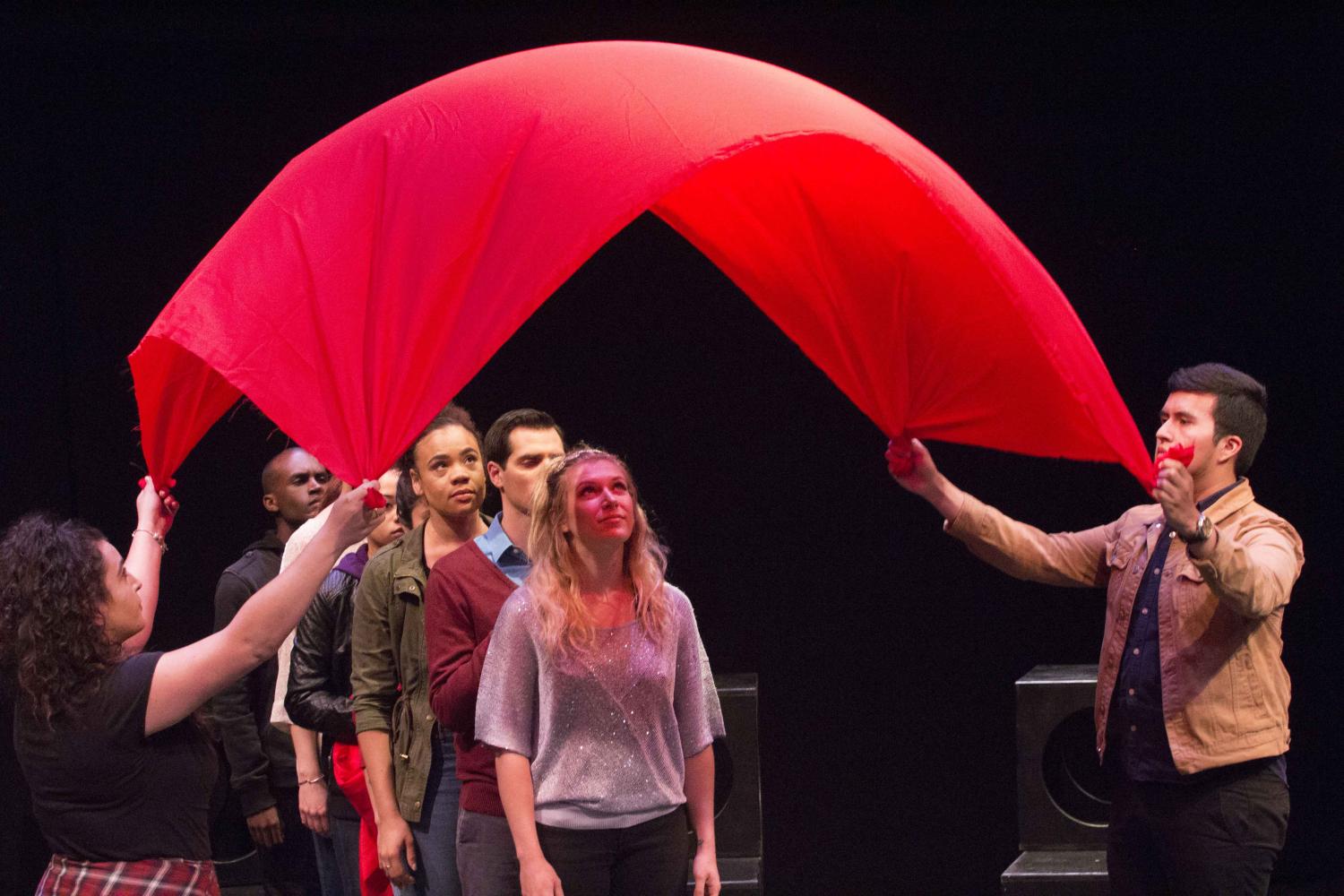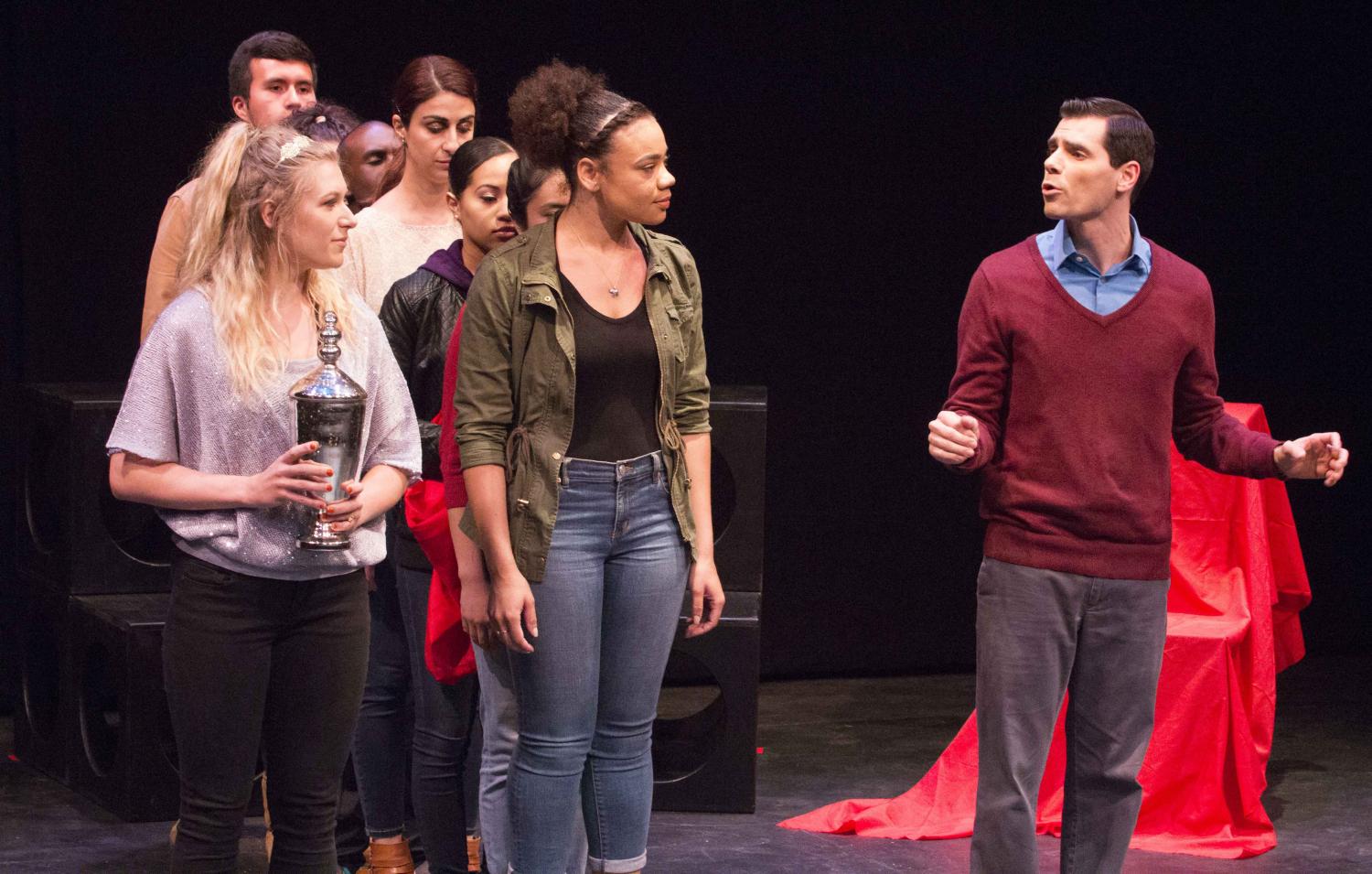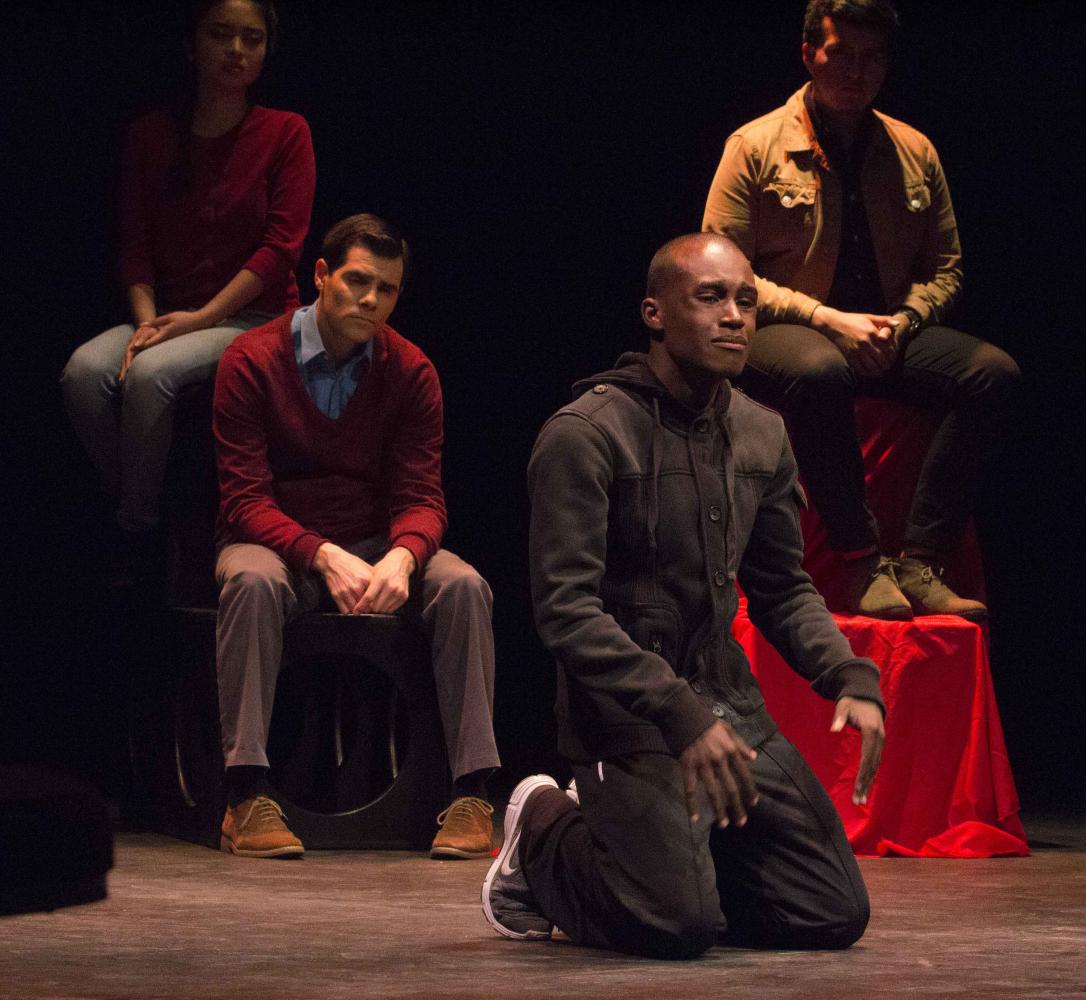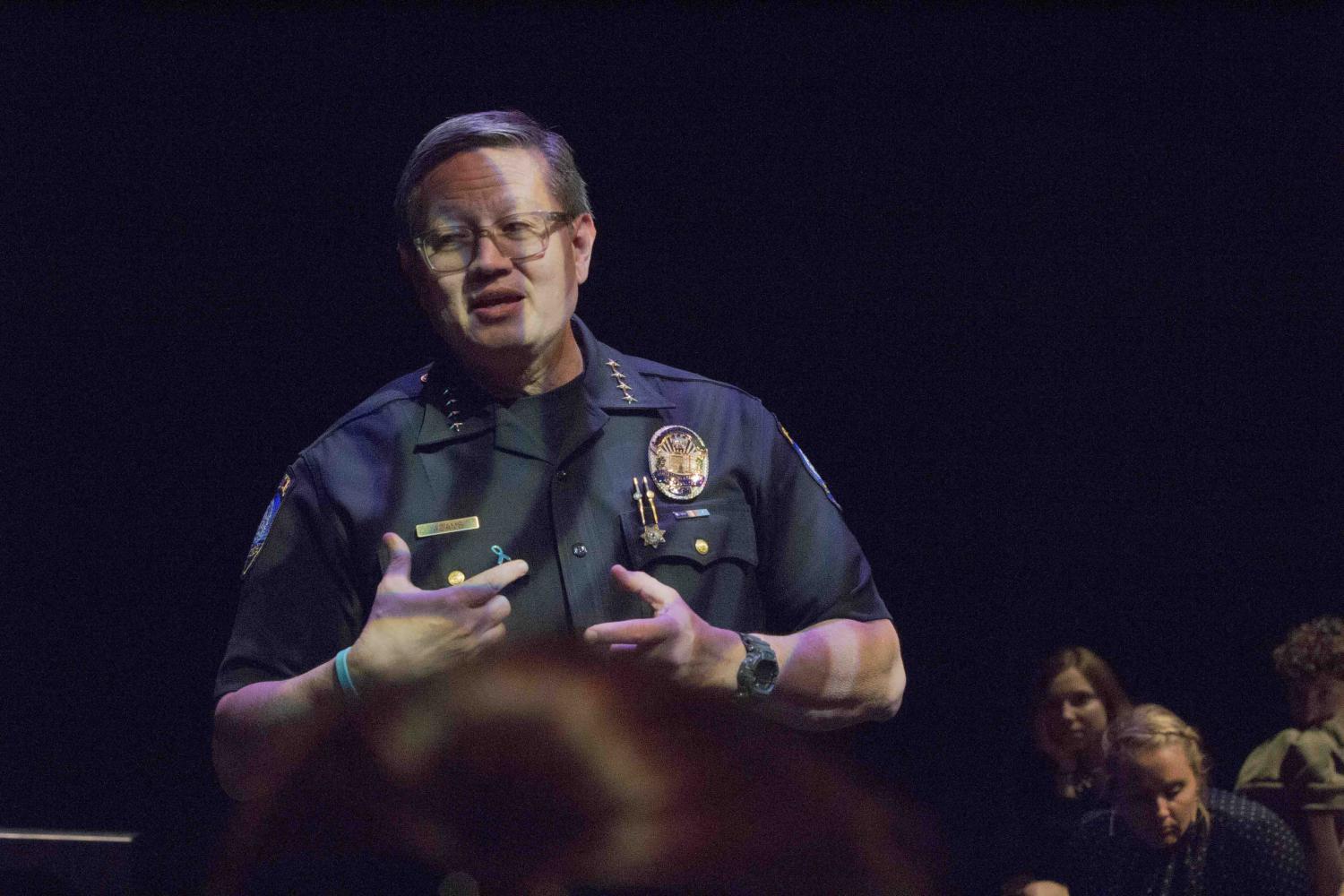Voices of Hope and its contribution at SMC
“You deserve kindness and respect… so demand it.”
Strolling through the backstage corridor at Santa Monica College’s Studio Stage production of Voices of Hope, there was an almost etheric energy beaming from the cast. They cycled through pre-show rituals of bantering with each other over Ben Nye makeup kits and diction exercises.
The performance prefaced with an introduction by the Voices of Hope playwright, Pamela Lassiter Cathey. In her welcoming address to the audience, she set a tone of seriousness with a staggering anecdote: one in three Americans have been or will be assaulted in their lifetime. With this new perspective, looking around at the filled seats of the darkened theater, it was uncanny to think that roughly 33.33% of the room is bearing the weight of experiencing assault. With this new awareness, I pulled up my bootstraps of empathy, ready to experience this journey of poignancy and perseverance. The company set the stage, alluding to Greek mythology, with a prologue telling the tale of Pandora’s Box. This introduction was a conceit for humankind’s oppression and force. The cast then adorned the stage with a red tapestry, poetically symbolizing the evil nature released from Pandora’s box.
Much like the pre-show statistic, the production was sectioned into thirds by age of assault survivor. Each part contained three vignettes for a total of nine subplots centered around a specific assault case, and each tale was told by the victim.
The troupe’s most energetic performance came from none other than Jordan Worthy, who used his Bard-esque, expressive talent to captivate the crowd. Countering this energy, Sivan Aviv and Paul Gabriel created performances with equal amounts of emotional investment. With that was an internalized and stoic energy, encapsulating truth with their empathetic storytelling. Justin Gubersky was memorable as he fell into the shoes of “the boy next door” archetype with just the right amount of Jim Carrey physicality and Marty McFly quirk. Jordan Barksdale beautifully exemplified an innate skill in obtaining the audience’s attention with a genuine and grounded portrayal.
Once the company took their final bows, a panel consisting of Pamela Cathey, SMC’s Chief of Police Johnnie Adams, and other law enforcement members and professionals who deal with Title IX and assault cases on a regular basis took the stage. They talked about resources available for those who have been assaulted.
One of the more fascinating things discussed by this panel was Cathey’s organization, the Institute for the Prevention of Relationship Violence, and a technique she advocates called “narrative therapy.” It’s a type of cathartic exercise developed for those who have dealt with assault. In it, they recount their experiences through autobiographical journaling — the process from which Voices of Hope was based. Another point of discussion at the forum was Livesafe, a software platform available on smartphones. It offers a more discreet way to contact SMC police than dialing 911. Livesafe even has a way to stream and send media to authorities which can be “beneficial in situations where one needs to discreetly contact us, but needs to do so without letting others know,” explained Chief Adams.
Undoubtedly, Voices of Hope has brought its message of hope and perseverance in the depths of adversity to those who have been affected by assault. In the spirit of empowerment Cathey proudly stated as the panel concluded, “You deserve kindness and respect, so demand it.”
Voices of Hope closed at the Studio Stage theater at Santa Monica College on April 30th, after running for six performances over the span of two months.







